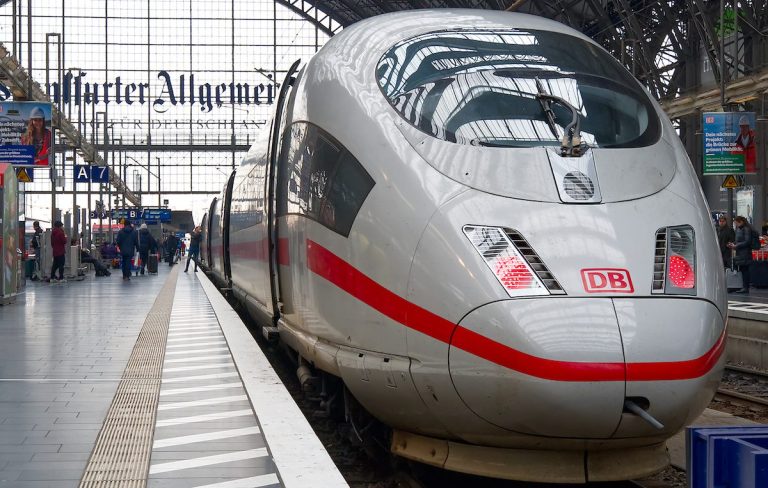German Railway Bets Industrial Metaverse Will Cut Delays and Boost Safety

German national railway operator Deutsche Bahn is building an industrial metaverse of its entire 20,500-mile rail network that it hopes will help it stop crashing a locomotive-size hole in the country’s reputation for punctuality.
In this fourth article in the PYMNTS industrial metaverse series about the fledgling use of private enterprise virtual realities, we’ll look at how the troubled railway is building a massive digital twin of its entire network, including all 5,700 stations that will provide both a real-time view of operations and a boost to the artificial intelligence (AI) program it has in place to help it improve on-time arrivals.
See also:
Nvidia, Deloitte Beat Meta to Punch With Enterprise VR Offering
Is the Industrial Metaverse Virtual Reality’s Commercial Future?
Linking Digital Twins to Make an Industrial Metaverse
Interpol Now Trains Crimefighters in the Industrial Metaverse
With an on-time rate of just 75% last year and a goal of no more than 80% in 2022, Deutsche Bahn has problem that goes beyond reputational: Arriving one hour late entitles passengers to a 25% refund, while two hours costs it 50%.
In one of the most ambitious uses of the Nvidia and Siemens industrial metaverse platform, Deutsche Bahn’s Digital Rail for Germany (DSD) division is building a digital twin it hopes will provide it with a “single source of truth” it can use to “maximize transport efficiency and capability without building new tracks,” Nvidia said in a video announcement.
The goal, it added, is to build a virtual, real-time simulation of every part of the network that will enable “continuous improvement in the deployment of vehicles and railways, maximizing operational efficiency and speed while reducing costs.”
Long term, Deutsche Bahn’s goal is a fully automated train network, Digital Engineering 24/7 reported after a Nvidia press event earlier this month.
IoT to AI
First and foremost, Deutsche Bahn’s industrial metaverse will provide the operator with a “photorealistic and physically accurate emulation of the entire rail system” — a virtual representation of what’s actually happening, letting it find problems and make fixes and updates faster, according to the report.
Another function will be educational. The company will use Microsoft’s Hololens virtual reality (VR) headset to give employees “a less theoretical and more practical understanding,” of how its tracks and switches — which can be gummed up by a small stone — work together, how malfunctions that cause congestion and delays happen, and how they can be avoided or fixed.
The digital twin will also rely on the Internet of things (IoT) — a huge network of sensors working on 5G wireless as well as cameras and LIDAR detection systems on the trains themselves, Nvidia said at its announcement of its Omniverse virtual metaverse platform in October.
This will allow Deutsche Bahn to “identify anomalies over time and help better coordinate rail operations,” said Mike Geyer, Nvidia’s Omniverse product manager, in the Digital Engineering 24.7 report. That will combine and aggregate all of the data it is collecting and be used to train the AI network Deutsche Bahn is building.
“If there is an obstacle on the track, rather than making a phone call to someone who will have to then re-route multiple trains, the technology on the trains will see that obstacle and then alert other trains that they need to alter their routes,” Geyer said, per the report. “That is the level of automation they are aiming to ultimately achieve.”
Deutsche Bahn Chief Technology Innovation Officer Rolf Härdi gave the example of what he called condition-based maintenance, founded on the company’s knowledge of how its railcars and their various parts react to different conditions, changing how they function or wearing out when the digital twin project was launched in late 2020.
“I can then use the digital twin to perform predictive analyses and simulate maintenance scenarios,” Härdi explained at the time. “In combination with external influences such as the weather and the speed at which a vehicle is driven, we can draw conclusions and determine where we can improve.”
For all PYMNTS crypto coverage, subscribe to the daily Crypto Newsletter.